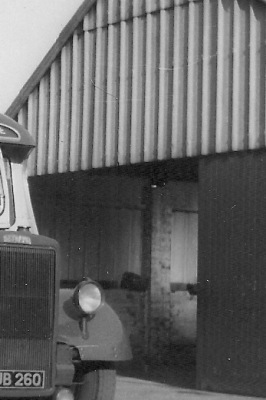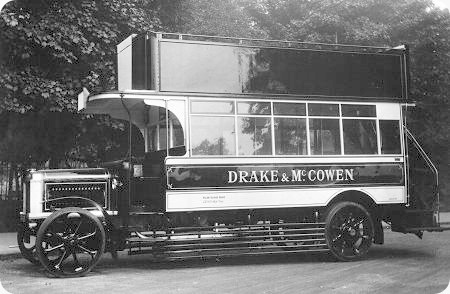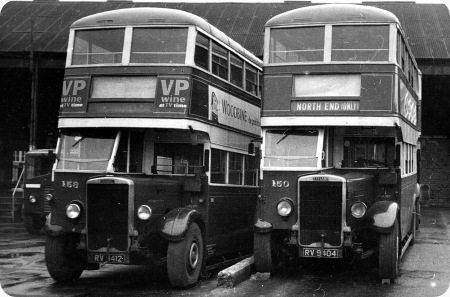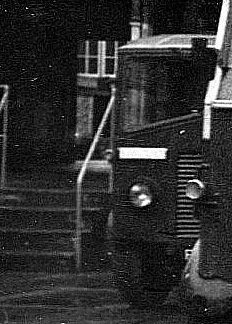Wallace Arnold Tours – Leyland Tiger – LUB 260
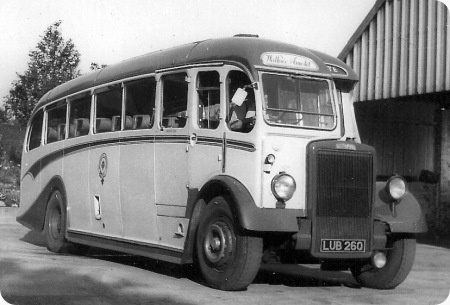
Photograph by ‘unknown’ if you took this photo please go to the copyright page.
Wallace Arnold Tours Leeds
1948
Leyland Tiger PS1
Duple C33F
This photo is another from my dusty collection of postcards bought many years ago, and recently extracted from the proverbial shoebox. This view of Wallace Arnold coach LUB 260 was taken by an unknown photographer sometime in the mid-1950s, and might possibly have been at their Paignton depot (confirmation would be appreciated please). Amazingly, on the back of this photo I have written its subsequent history, although where I got the information from is a mystery, On being withdrawn by WA in 1958 it went to Ward Brothers of Lepton (Huddersfield). In 1960 it was sold to Mitchell’s of Luthermuir, presumably to join their existing fleet of red and cream PS1 coaches – see this link – Its last known move was to contractors Haley of Cleckheaton (West Yorkshire) in 1962, and was presumably scrapped soon after. Quite a well-travelled coach even after its glorious WA days.
Photograph and Copy contributed by Paul Haywood
08/07/12 – 10:15
Looks like the frontage of Royston depot – but I stand to be corrected . . .
Philip Rushworth
08/07/12 – 10:15
There’s a picture of this coach in "Holidays By Coach" an illustrated history of Wallace Arnold, by Stewart J Brown.
The caption states it was rebuilt with a full front in 1954.
In the same book is a photo of Royston depot taken in 1948 and there are detail differences in the asbestos style cladding to the building.
Eric Bawden
09/07/12 – 07:13
Yes R. T. Haley of Hillside Works Hunsworth Cleckheaton. I remember them having this coach painted bright yellow and as stated fitted with a full front. I don’t think the company is still in business.
Philip Carlton
10/07/12 – 06:55
Anybody have a photo of LUB 260 after rebuilding to full front?
Eric Bawden
10/07/12 – 13:46
The full front coach would surely never have looked as good as the original did. What a great photograph…I really enjoy looking at these old buses and coaches…and wishing I had a time machine!!
Norman Long
11/07/12 – 08:16
Too true Norman – these full front conversions of the early 1950s always looked "unhappy", and the process turned the interiors of the driving cabs into a nightmare of noise and condensation – and as with all these "consultant led" schemes fooled nobody – the public aren’t dense, but sadly even today operators seem to think that they are – age disguised re-registrations etc – bah humbug !!
Samuel Ledgard had a batch of truly beautiful looking PS1/Duple half cabs in 1948 – classic is the word – and had them "full fronted" – ever after they looked simply awful and caused we devotees much displeasure.
Chris Youhill
11/07/12 – 12:35
Yet again, I find myself agreeing with Ebenezer Youhill. With the possible exception of the "Regent V" version, I always preferred exposed radiators as well.
David Oldfield
12/07/12 – 07:55
I’m always glad of the support of our wise colleague David Cratchett Oldfield in these matters – I might just consider relenting my nature and let him have Christmas Day off with pay this year !!
Chris Youhill
12/07/12 – 11:21
…..with a whole goose, not just a pigeon!
David Oldfield
15/07/12 – 17:10
LUB 260 rebuilt with full front by Wilkes and Meade to Plaxton design in 1/54.
Dave Williamson
20/03/15 – 09:24
Thank you for all these wonderful comments. Immensely useful to me as I write about my childhood memories of going to Blackpool Illuminations in the 1950s. I just wish there was a shot of the inside of the coach as I can’t remember where you stored your mackintosh and bag, did they have overhead racks or nets? Anyway, lovely stuff and great memories, thanks.
Lynda Radley Finn
Quick links to the - Comments Page - Contact Page - Home Page
